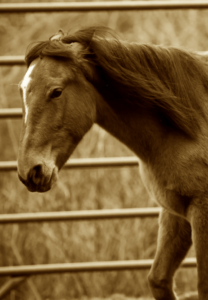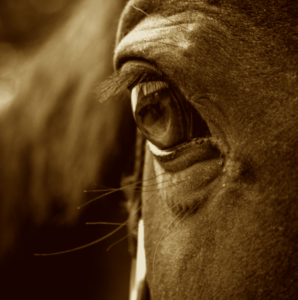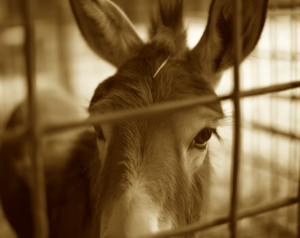Editor’s Note: Daniel Dauphin is a Best Horse Practices Summit presenter, an expert on bits and bitting, and a popular clinician. He also has a podcast, Adult Onset Horsemanship.
By Daniel Dauphin
Read Learned Helplessness and Flooding, Part II
 “Learned helplessness” is one of those terms that I’m hearing more and more often. Unfortunately, like a lot of words these days, the meaning of learned helplessness (LH) has become somewhat meaningless.
“Learned helplessness” is one of those terms that I’m hearing more and more often. Unfortunately, like a lot of words these days, the meaning of learned helplessness (LH) has become somewhat meaningless.
Learned helplessness is the farthest of psychological extreme states. Defined by Medical News Today: “learned helplessness is a state that occurs after a person has experienced a stressful situation repeatedly. They believe that they are unable to control or change the situation, so they do not try, evenwhen opportunities for change are available.”
It is not likely that you’ve seen a horse in LH. If you have, I offer my sympathies to you.
When you see some social media hero trainer talking about the many horses they’ve worked with in LH, that’s a pretty strong indication that they don’t yet know how much they don’t know. Even in true life-and-death rescue situations, LH isn’t common.
Learned Helplessness (LH) definitively requires repeated experiences where nothing that horse tried, in order to avoid a stressor worked. It results with that horse never trying to avoid that stressor again. Extreme nothingness is the result. Absolute lack of try. They’ll die and not try to escape. They don’t try less. They don’t try less often. They don’t decide to accept that this situation or scary thing is okay after all.
 LH is not “desensitizing.”
LH is not “desensitizing.”
When I hear/read/watch people talking about learned helplessness, they most commonly say something like: “The horse is in learned helplessness. It’s traumatized and will do anything to avoid the pressure.”
While I’d certainly agree that putting a horse in the situation described wouldn’t be a good thing, it’s also certainly NOT what LH is. Horses in LH aren’t doing anything to avoid pressure/pain. This is a trance-like state that
they’ll follow into death, if it comes to that. You could set off fireworks, use a cattle prod, whip them, whatever. The result would be no response.
I read a magazine article years ago about a donkey that someone was trying to load to take to the vet. They’d always had trouble loading this donkey and had enough on this day. Their patience ran out. The donkey had sat down at the entrance to the trailer and refused to move in any way (trance state). The person decided to build a fire under said donkey’s belly. Surely that would get a response. The donkey didn’t move and the person had to put the fire out and then have the vet come out to treat the now severely-burned donkey.
 Wouldn’t you like to hear that phone call to the vet clinic?
Wouldn’t you like to hear that phone call to the vet clinic?
THAT is Learned Helplessness.
Extremes are important and terms describing them shouldn’t be hyperbolized to make someone look virtuous, cool, or smart. That’s a selfish abomination and a lack of real stewardship on display.
The horse that has been properly round-penned and learned to choose the easier path (of standing still to be caught and saddled, rather than running around) is not in a state of learned helplessness. If a self-appointed internet guru who uses only “humane and virtuous training methods” tells you that it is, that person is a charlatan or a moron.
They don’t give out medals for mental gymnastics at the Olympics. Meanings of words matter. Extremes are extremes. They’re not something to normalize and pollute for your own ends.